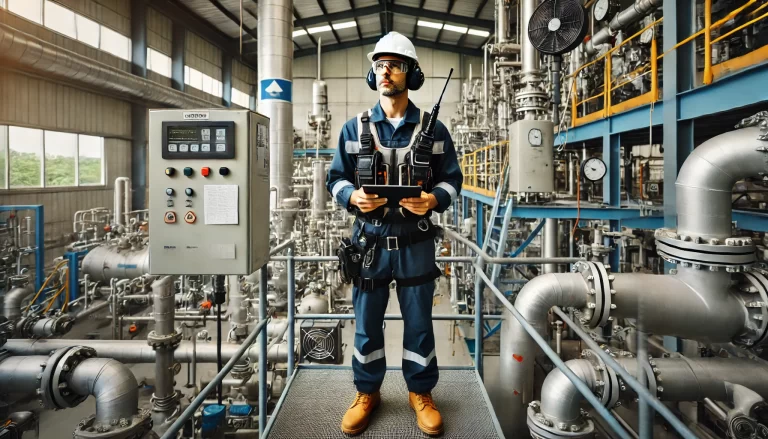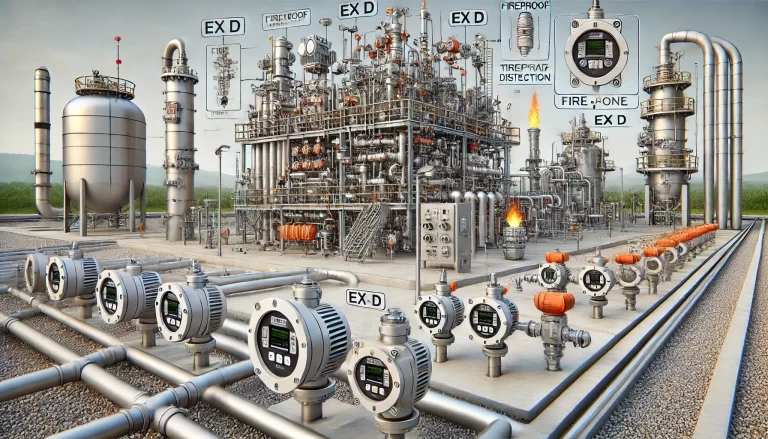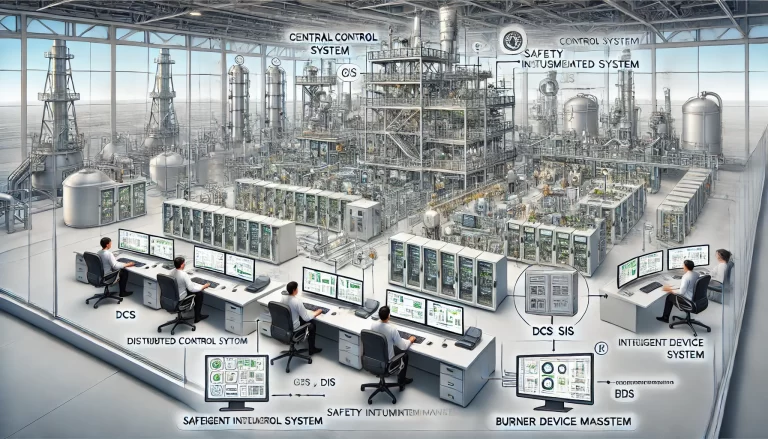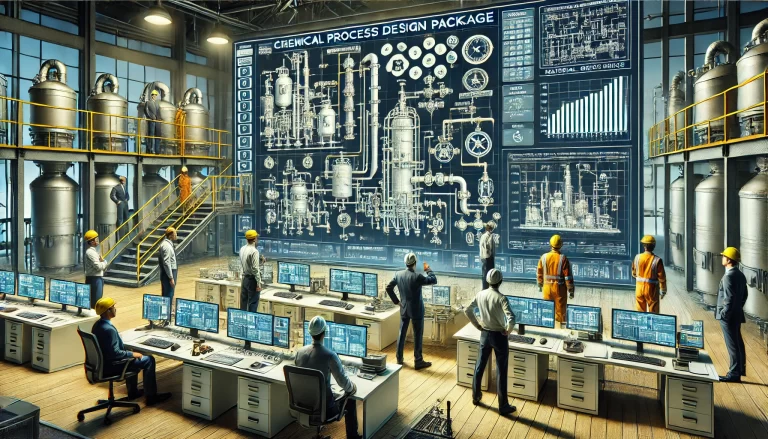Selecting the right instrumentation is a critical aspect of ensuring the safety, stability, and efficiency of chemical processes. The selection process must take into account a variety of factors, such as process conditions, medium characteristics, environmental requirements, and measurement precision. This guide outlines the key steps and considerations to help streamline the selection process.

1. Understanding Process Requirements: Start with the “Measurement Objective”
1.1 Measurement Parameters and Ranges
Identify the parameters to be measured, such as flow, pressure, temperature, level, or composition, and define their required measurement ranges (e.g., pressure: 0~10 MPa, temperature: -20~200°C).
Consider parameter fluctuation characteristics: Does the parameter experience high-frequency pulses (e.g., pump discharge pressure), slow changes (e.g., tank level), or transient spikes (e.g., pipeline shock pressure)? These factors will influence instrument response speed and pressure tolerance.
1.2 Medium Characteristics Analysis
Physical properties: Is the medium gas, liquid, steam, or slurry? Does it have high viscosity, corrosive properties, flammability, toxicity, or tendencies to crystallize or vaporize (e.g., concentrated hydrochloric acid needs instruments made of acid-resistant materials, and liquefied petroleum gas requires explosion-proof designs)?
Chemical properties: Will the medium react with the instrument components (e.g., probes or diaphragms)? Materials like 316L stainless steel, Hastelloy, or PTFE may be required depending on the application.
1.3 Process Pipeline Conditions
Consider pipeline size (DN15~DN1000+), installation method (flanged, threaded, clamp, etc.), flow velocity (affecting flowmeter selection), and whether online maintenance is necessary (e.g., instruments that can be installed or removed under pressure).

2. Core Selection Factors: Focus on “Performance and Safety”
2.1 Measurement Accuracy and Error Tolerance
Choose instruments based on precision required for process control (e.g., 0.5% for standard control, 0.1% for measurement-grade instruments). Keep in mind that higher precision may come at a significantly higher cost.
Account for additional errors: Will environmental temperature variations, vibrations, or installation methods cause accuracy shifts? For instance, differential pressure flowmeters require strict vertical installation to avoid errors.
2.2 Environmental Adaptability and Protection Ratings
Explosion-proof requirements: Many chemical plants are in hazardous, explosive environments (e.g., Ex d IIC T6 protection class). Ensure the instrument has relevant explosion-proof certifications (e.g., China Ex, ATEX/IECEx).
Protection ratings: For environments with humidity, dust, or corrosive gases, select instruments with IP65 or higher protection ratings (e.g., IP66 for high-pressure water spray). Outdoor instruments should also be designed for sun and rain protection.
Temperature/pressure tolerance: In high-temperature environments (e.g., above 300°C), select heat-resistant materials, and ensure instruments can withstand vacuum conditions if used in negative pressure pipelines.
2.3 Reliability and Maintenance Costs
Prefer simple structures with low or no maintenance requirements (e.g., electromagnetic flowmeters, which lack moving parts, have lower maintenance than turbine flowmeters).
Consider the service life and spare parts availability: Imported instruments may have longer lead times for spare parts, while domestic instruments may offer better cost performance, but their long-term stability must be verified.
2.4 Signal Output and Communication Protocols
Ensure compatibility with standard signals (4-20mA, 0-10V) or digital signals (HART, Modbus, Profibus), which are crucial for integration with DCS/PLC systems. Smart instruments with LCD displays and communication interfaces make remote monitoring and debugging easier.

3. Typical Instrument Selection Scenarios
3.1 Flowmeter Selection
Clean liquids/gases: Use turbine flowmeters (high accuracy), electromagnetic flowmeters (for conductive liquids), or vortex flowmeters (for steam/gas).
Corrosive media: Opt for electromagnetic flowmeters (with PTFE liners) or positive displacement flowmeters (made from Hastelloy).
Large pipe diameters/low flow: Consider ultrasonic flowmeters (non-contact, easy to install).
Slurries/particulate media: Choose target flowmeters or wedge flowmeters (resistant to clogging).
3.2 Pressure Instrument Selection
General pressure measurement: Select silicon pressure transmitters (cost-effective) or capacitive pressure transmitters (high precision).
Corrosive/viscous media: Use diaphragm pressure transmitters (with 316L or tantalum diaphragm material).
Explosion-proof scenarios: Choose intrinsically safe pressure transmitters (Ex ia type) with safety barriers.
3.3 Temperature Instrument Selection
High-temperature measurement (>500°C): Use thermocouples (K-type, S-type), with matching compensating cables.
Medium-to-low temperature measurement (-200~500°C): Use RTDs (PT100), which offer higher precision than thermocouples.
Corrosive environments: Choose sheath thermocouples/RTDs with 316L or ceramic protective tubes.
Non-contact measurement: Use infrared thermometers (for high-temperature molten media or moving parts).
3.4 Level Instrument Selection
Open containers/atmospheric tanks: Use magnetic level indicators (easy to read) or submersible level transmitters (low-cost).
High-pressure/closed containers: Use differential pressure level transmitters (consider medium density variation) or radar level transmitters (non-contact, resistant to steam interference).
Flammable/explosive media: Use servo level transmitters (explosion-proof design, high-precision).

4. Selection Pitfall Avoidance Guide
4.1 Avoid One-Size-Fits-All Selection
Different points within the same process unit may require different instruments based on medium characteristics (e.g., upstream and downstream of a pipeline may require different flowmeter types due to purity differences).
4.2 Pay Attention to Industry Standards and Certifications
Certain industries, like petrochemical, require compliance with standards such as SH/T 3005 or GB 50058. Food-grade chemicals require certifications like 3A or EHEDG.
4.3 Trial Runs and Calibration
Always run new instruments in a small-scale trial before full deployment to validate precision, stability, and interference resistance. This will help avoid production accidents from incorrect calibration.
4.4 Cost vs. Value Balance
Don’t just aim for the lowest price. Calculate the total life-cycle cost (including procurement, maintenance, and downtime) and balance quality with cost. For critical control points, opt for high-quality imported brands; for auxiliary points, consider cost-effective domestic alternatives.

5. Auxiliary Tools and Resources
Manufacturer Samples and Technical Manuals: Refer to detailed selection guides available on the websites of top brands like E+H, Rosemount, and Yokogawa, as well as domestic manufacturers like ChuanYi and HongRun for tailored solutions.
Industry Case Studies: Explore WeChat public accounts (e.g., “Chemical Instrumentation Maintenance Experience Sharing”) and forums (e.g., HaiChuan Chemical Forum) for real-world instrument selection examples.
Professional Software Tools: Some manufacturers offer selection calculators (e.g., for flowmeters based on pipe size and flow velocity) or customized support through technical representatives.
By following these steps and combining process-specific requirements with the technical specifications of instruments, you can ensure accurate measurements, operational safety, and easy maintenance. If you have specific scenarios (e.g., flow measurement for a particular medium), further analysis can be conducted to refine your selection.
